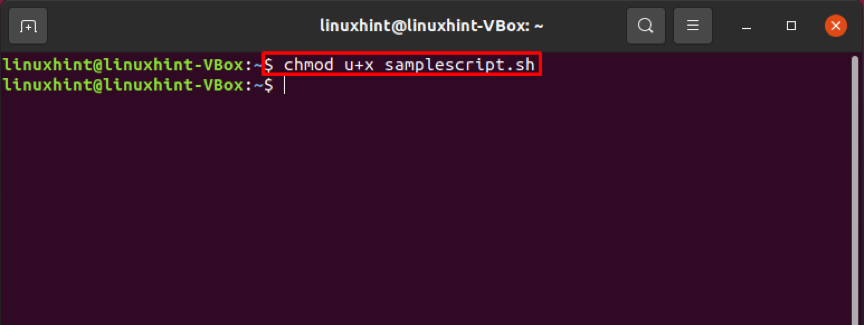

We can only run this command if we are allowed to change the privileges of the file. To solve this issue, we need to give ourselves execution privileges: chmod u+ x example.sh This command gives our user execution (x) privileges over the example.sh file. That will keep your documents safe but will re-install the Ubuntu system files. Our group also does not have write or execute permissions. If this is not possible you can also re-install without formatting. And executed on the broken system to restore the permissions. This answer from jlovi can be used to create a file with the permission in them. If you have a 2nd similar operating system it is also possible to copy the permissons from that system. With this you should be able to manually reset them from a live dvd. Files inside /bin/ need to be 755 except for symlinks those needs to be 777 and all are owned by root:root.įiles inside /etc/ need to be 644 and owned by root:root except for (if you have any of these that is):.Once ready, use tasksel to install the Samba server. The sum of these permissions is used to represent each type of author. First, open a command line terminal and install the tasksel command if it is not available yet on your Ubuntu 22.04 system. Here, each digit represents the sum of the permissions allowed: The same command can be run using octal notation: Here is an example where users can read, write, and execute a file whereas, group and others can only read it. Click Always trust this certificate in future sessions and click OK. You may be presented with an Unknown Certificate warning. Enter your server’s IP, your FTP username and password you created earlier, and click Quickconnect. filename is the name of the file whose permissions are changed. We recommend FileZilla, which works on Windows, Mac and Linux.

They can be represented using symbolic or octal numbers.

flags are the additional options users can set.The permissions can be changed using the chmod keyword. Remember that only root or users with Sudo privileges can change permissions for files and folders. Other users, however, may not be allowed to make such edits. Root has access to all files and folders and can make any edits. This error occurs when the user does not have the privileges to make edits to a file. While using Linux, you may encounter the error, “permission denied”.


 0 kommentar(er)
0 kommentar(er)
